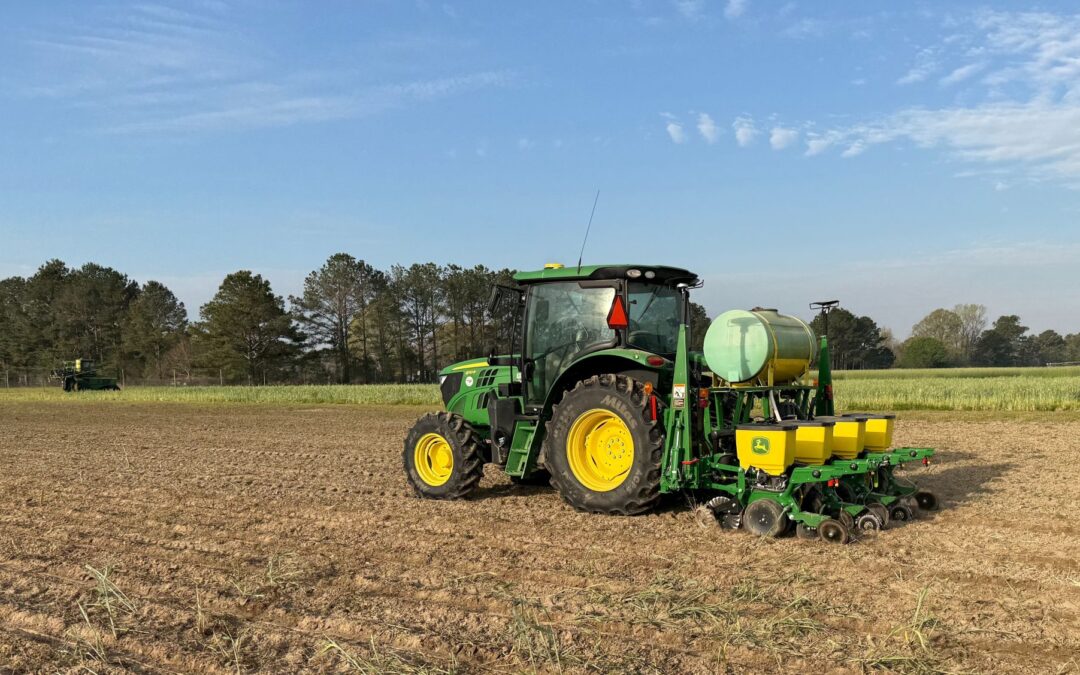
While climate predictions for the upcoming fall and winter months indicate that Alabama wheat producers will have fewer problems this season with the Hessian fly, there’s still potential for damage from the pest.
by PAUL HOLLIS
Climate predictions for the upcoming fall and winter months indicate that Alabama wheat producers will have fewer problems this season with the Hessian fly, but now’s not the time to completely let down your guard.
Results of studies have shown that Hessian fly infestation and yield losses are least during an El Niño climate event—a wetter and cooler phase—which is the forecast for the coming months.
“But that doesn’t mean we should stop worrying about the Hessian fly on wheat,” said Kathy Flanders, professor and Alabama Extension entomologist in Auburn University’s Department of Entomology and Plant Pathology.
The Hessian fly is one of the key insect pests of wheat, causing millions of dollars in damage each year. For that reason alone, farmers should not ignore the pest, Flanders said.
“Hessian fly populations and pressure will be less than average this growing season because we’ll be in an El Niño climate phase for the fall and winter,” she said. “That’s because of the biology of the pest and the rainfall patterns common with this climate phase.”
But some growers are at greater risk than others, said Flanders.
“You’ll have the greatest risk of Hessian fly pressure or damage if you need to plant on the earlier edge of the planting date window, if you’re planting susceptible varieties or if you’re planting wheat after wheat,” she said. “Regardless of the climate phase, you’ll want to be careful when selecting varieties to plant.”
Progress has been made in developing wheat varieties resistant to Hessian fly, but it’s an ongoing process.
“It has been an arms race of sorts to get the good genes into the plant so wheat will resist the insects,” Flanders said. “But they eventually overcome the resistance, which is why we’re always monitoring the Hessian fly on wheat.”
In 2014, Alabama farmers planted 255,000 acres of winter wheat for a total production of more than 15 million bushels. The value of this past year’s crop was approximately $92 million. Planting dates in the state range from mid-October in the northern regions to the first part of December in the south.
It hasn’t been so long ago, Flanders said, when growers had only a couple of options when it came to planting Hessian fly–resistant wheat.
“We have more options now. That’s good news for us, and it tells us plant breeders have been able to catch up a bit. But there also are varieties with no Hessian fly resistance, or the resistance isn’t as great as with others. Some of our varieties with better yield potential are susceptible to Hessian fly, and growers should avoid those in high-risk situations.”
Flanders will continue to evaluate varieties for resistance to Hessian fly this fall and winter at Alabama Agricultural Experiment Station research centers throughout the state.
She expects the risk of economic losses from the pest to continue for several reasons, including the adoption of crop rotation schemes that lead to planting wheat in the same field in consecutive years, the use of wheat as a cover crop, shifts to an earlier wheat planting date and increased wheat acreage.
The Hessian fly looks like a small mosquito, and when farmers scout their fields, it’s difficult to tell the difference between it and a gnat.
“The larvae are what cause the damage,” Flanders said. “The eggs are laid on the leaves, and the maggots hatch out and make their way down the base of the plants, hiding out along the leaf sheaves and doing their feeding. We have several generations each year of this pest.”
Although the first good frost usually kills of any adult Hessian flies that might be present in the field, there could be larvae or pupae in a field if wheat is planted early, she said. In those cases, the maggots emerge early in the season as the wheat is coming up, lay eggs on the leaf and then make their way down to the base of the plant, which is underneath the ground.
How do you know if you have an early-season problem with the pest?
“When the Hessian fly starts feeding, it stunts the plants, and plants don’t emerge normally,” Flanders said. “If only half of the leaf blade is coming from the ground, it could be a sign that you have a problem. Skips in your stand are another indication.”
Flanders’ research has shown the following wheat varieties to be among those resistant to Hessian fly biotypes found in Alabama:
- Oglethorpe
- Baldwin
- Croplan 8302
- AGS 2026
- Pioneer 26R41
- Pioneer 26R94?
- Savoy
- SS8415
- SS8629
- SS8629
- Terral TV 8848
- Terral TV 8861




